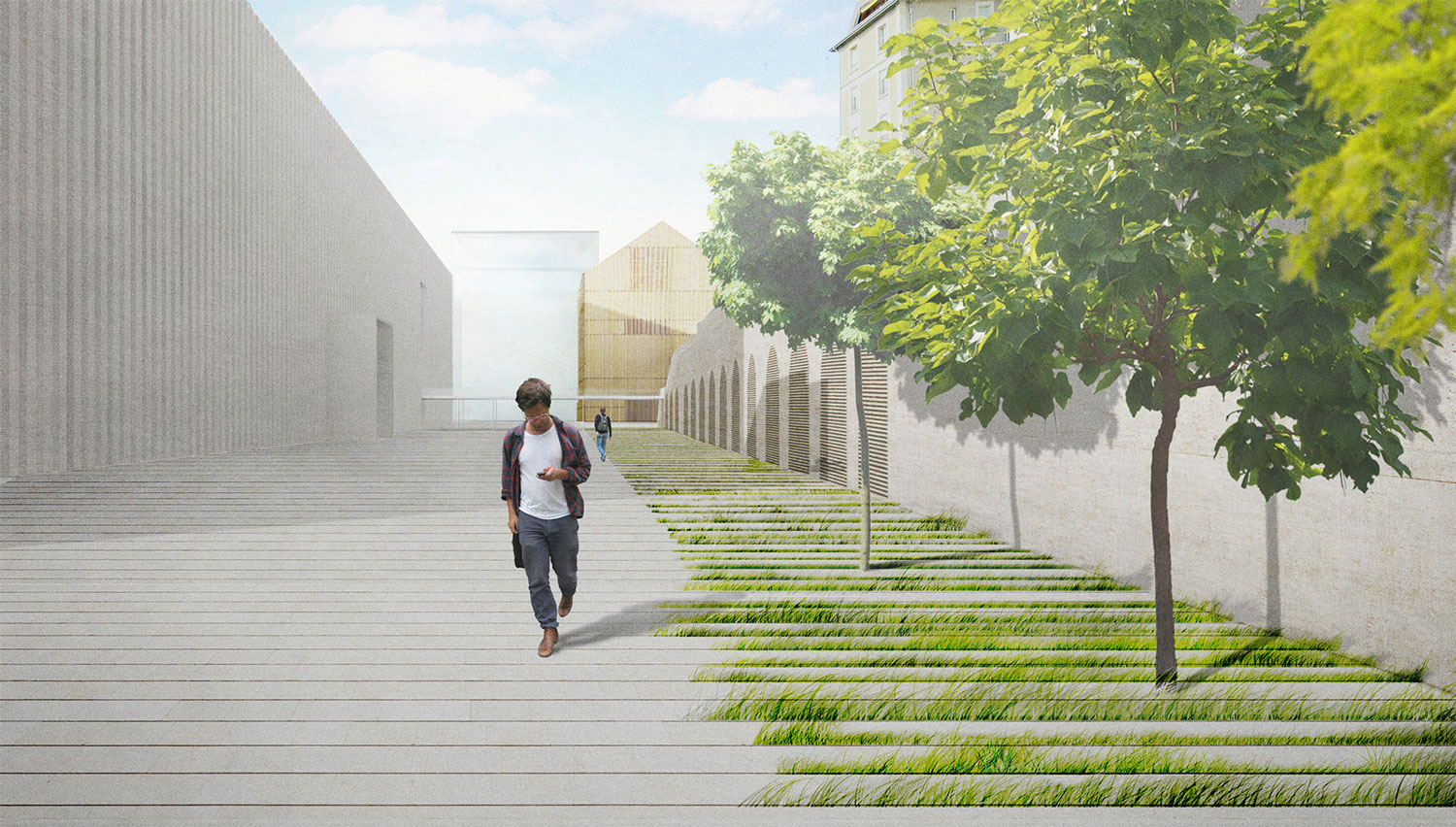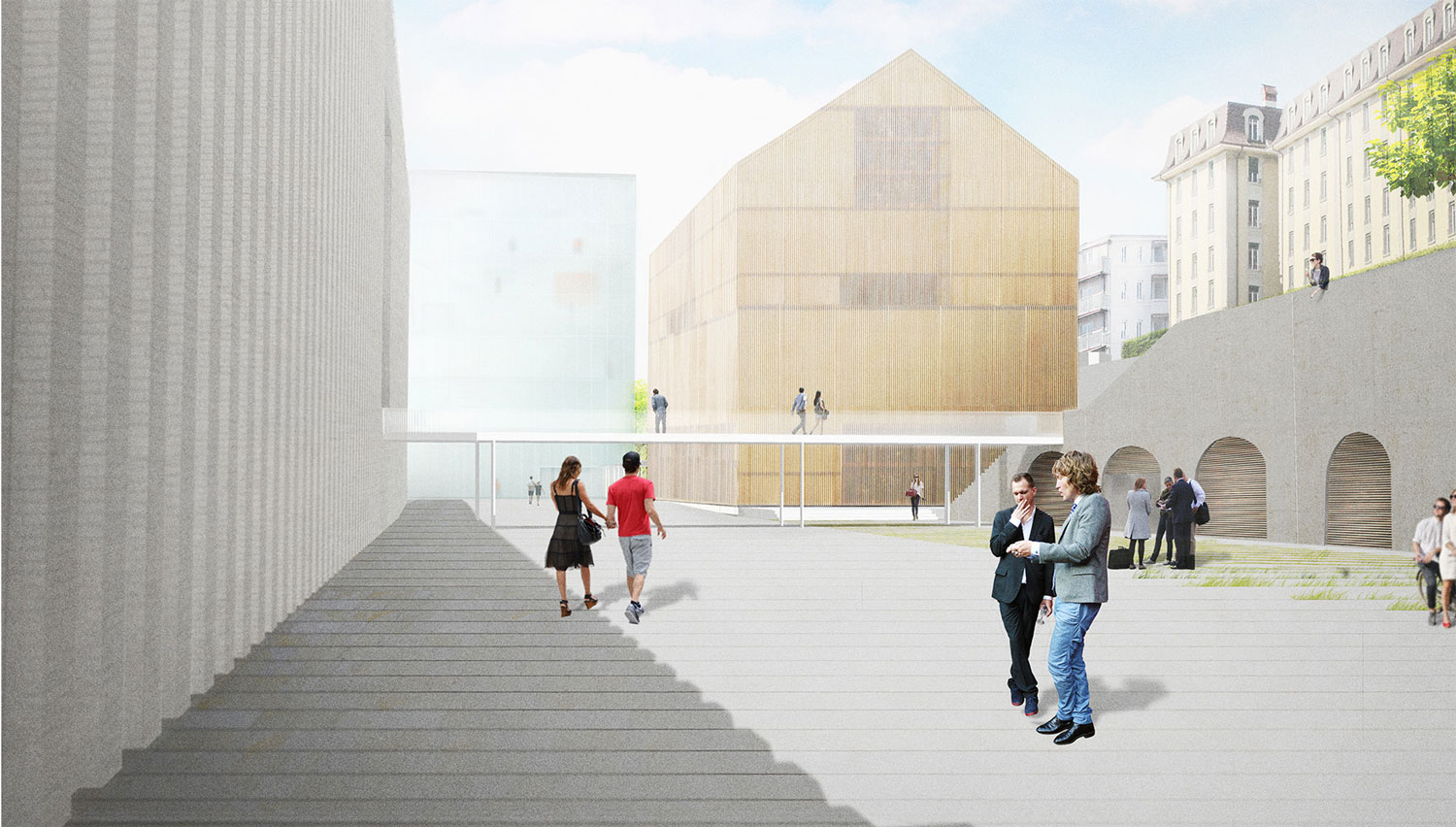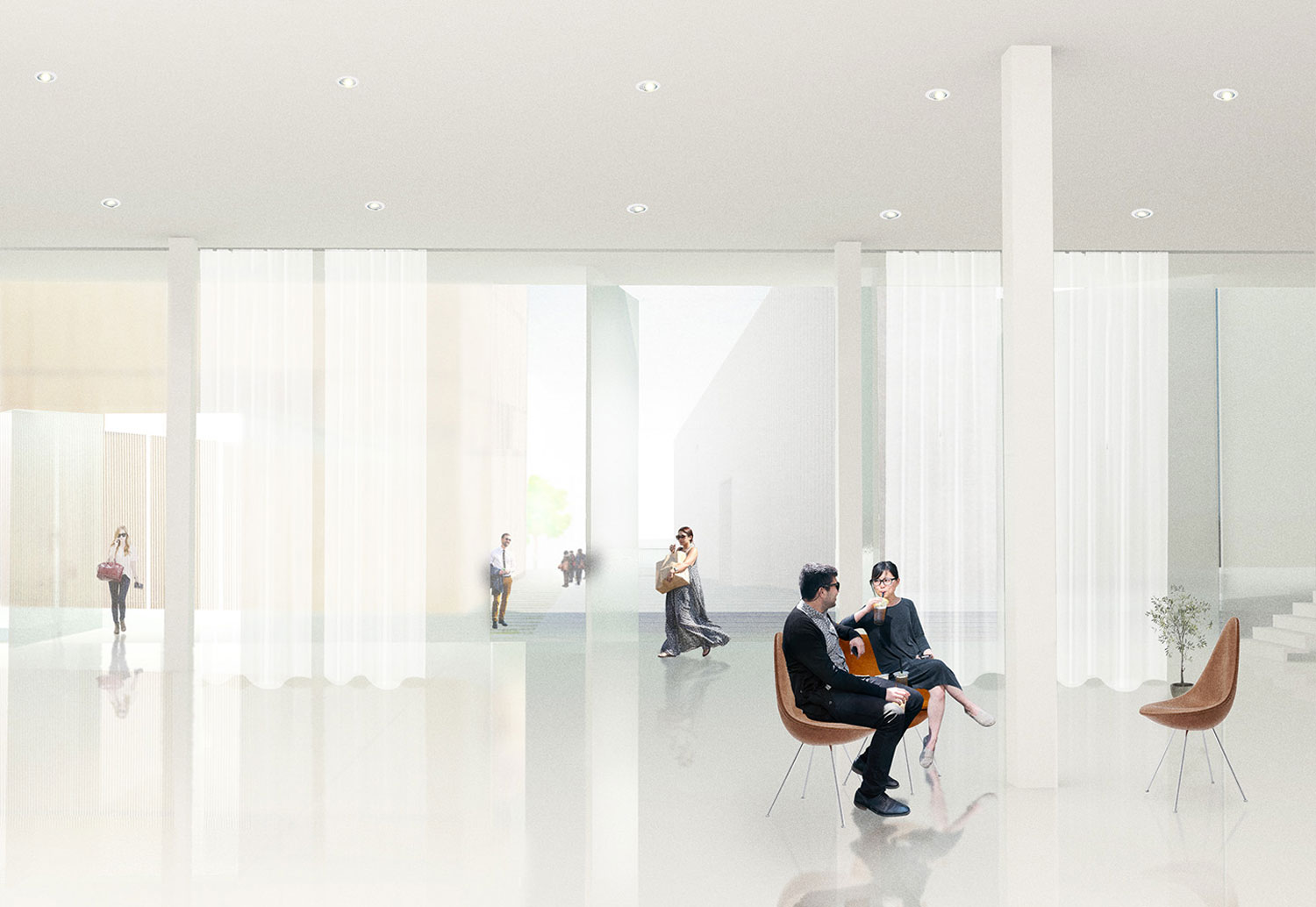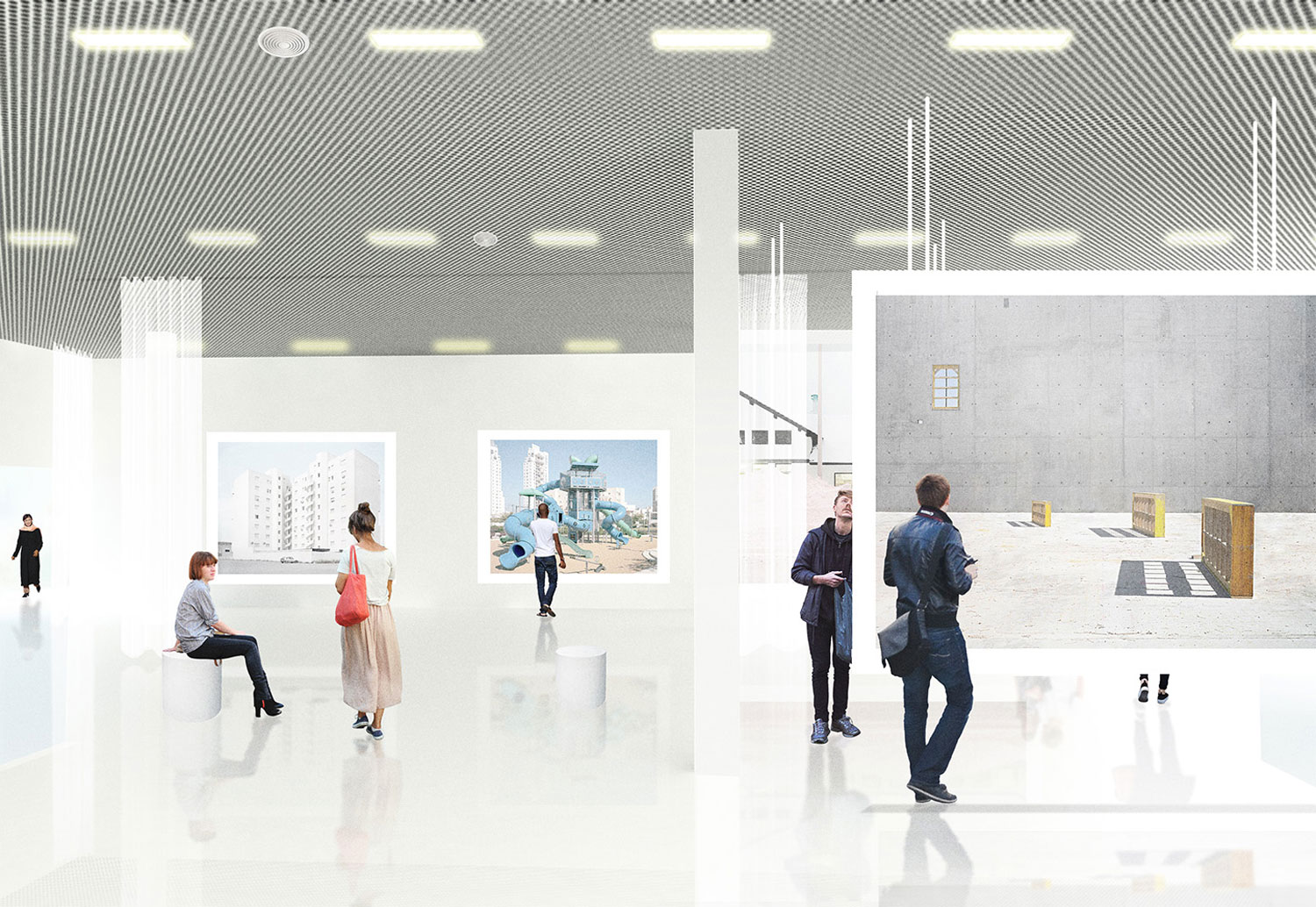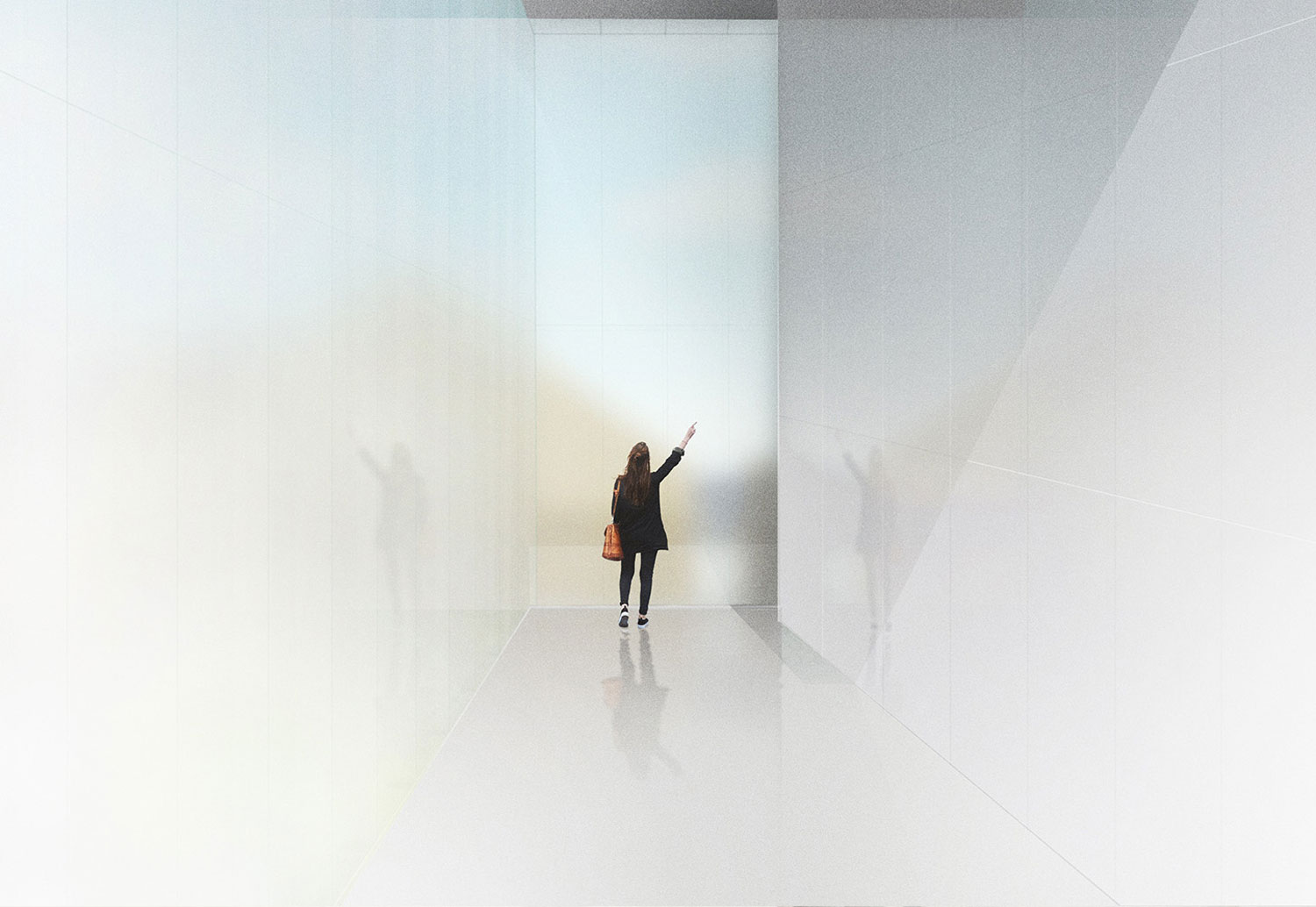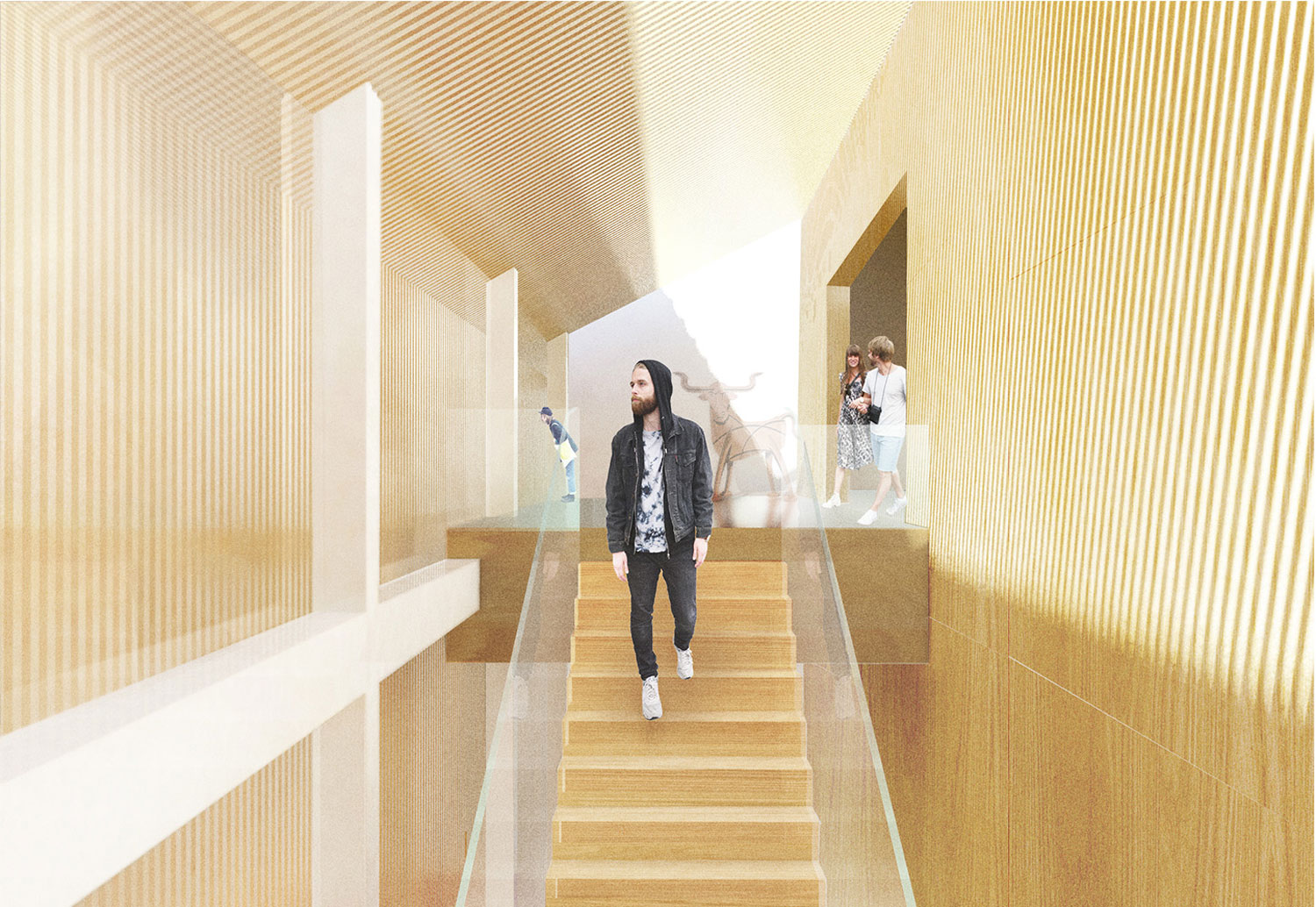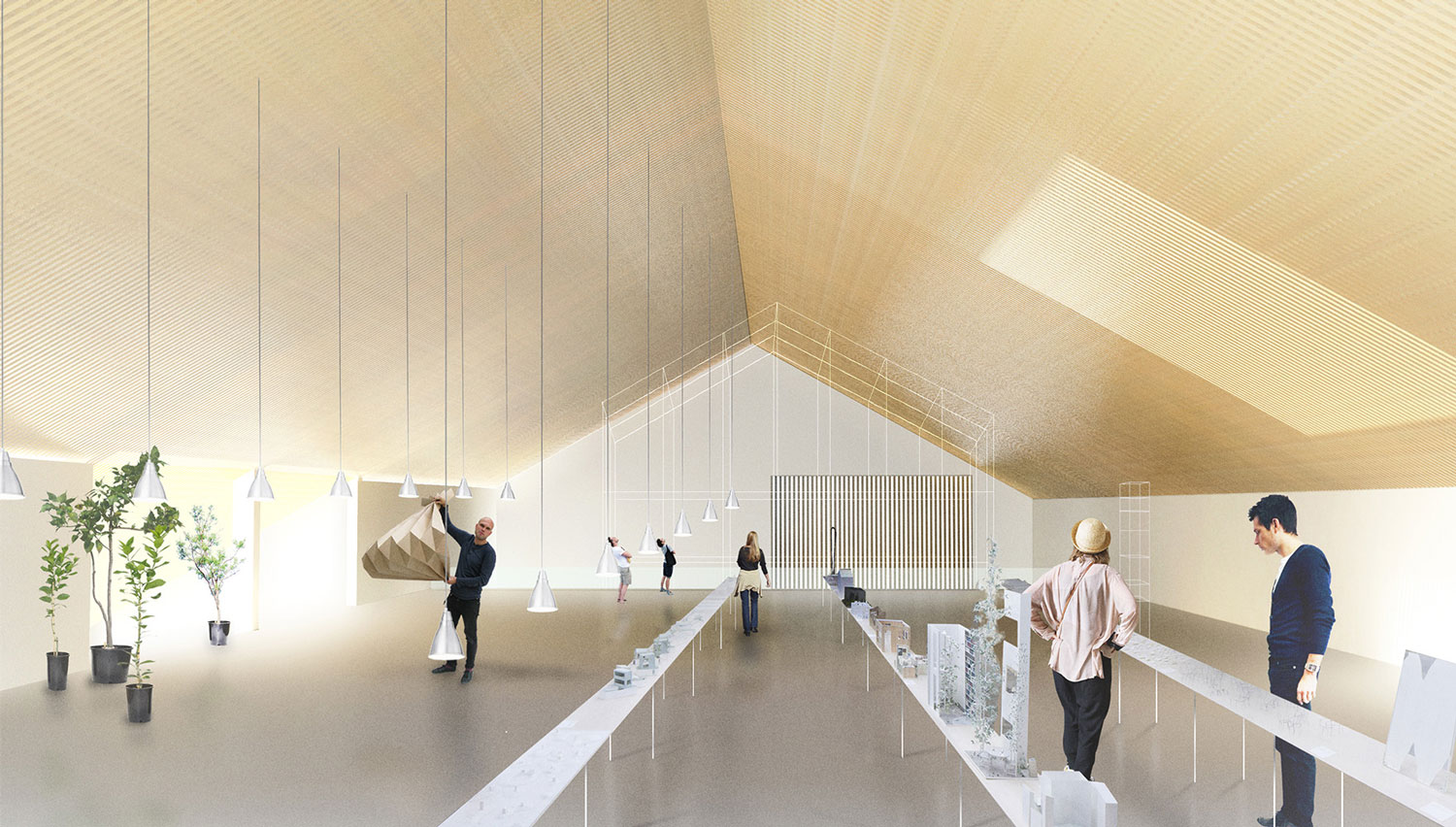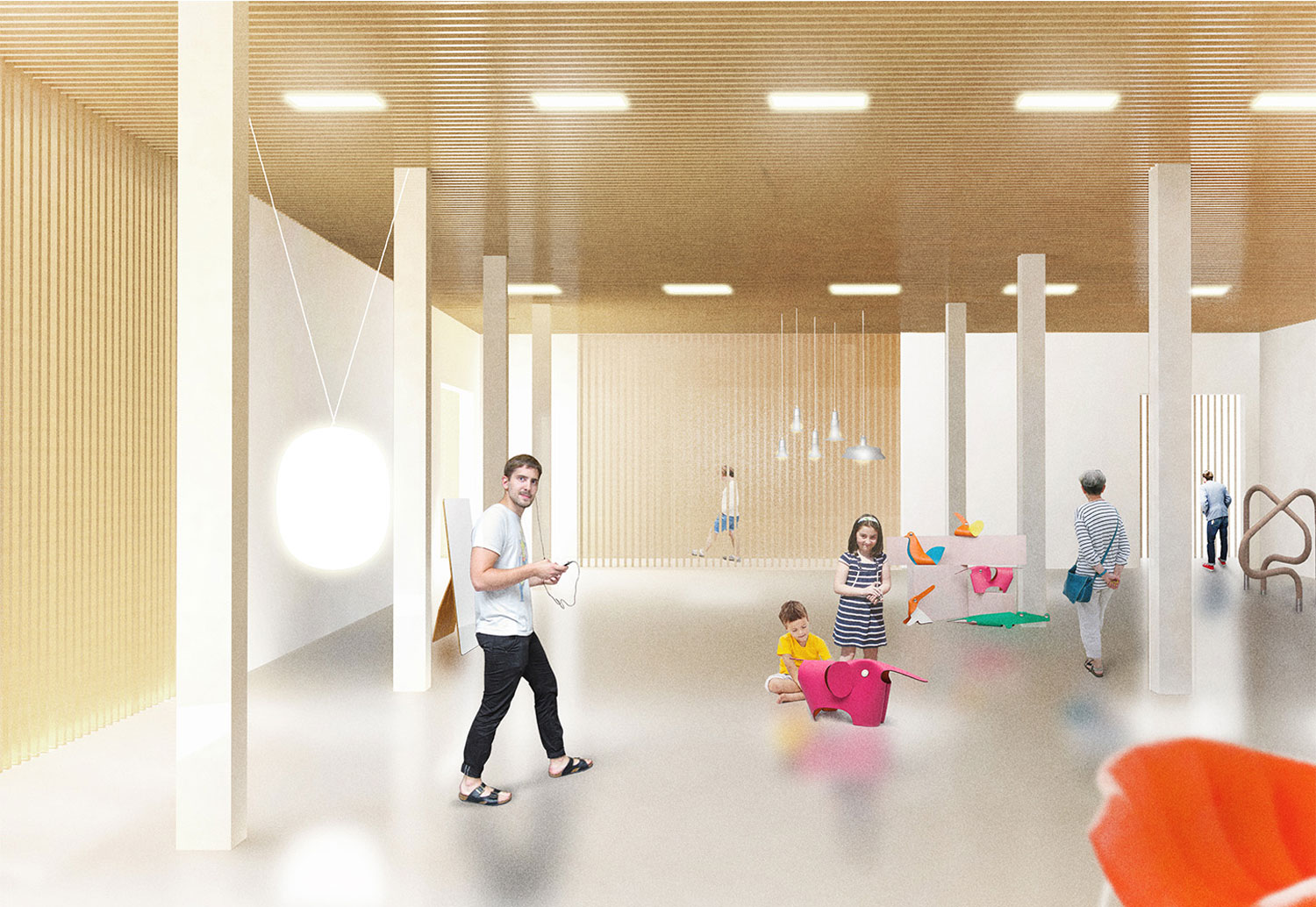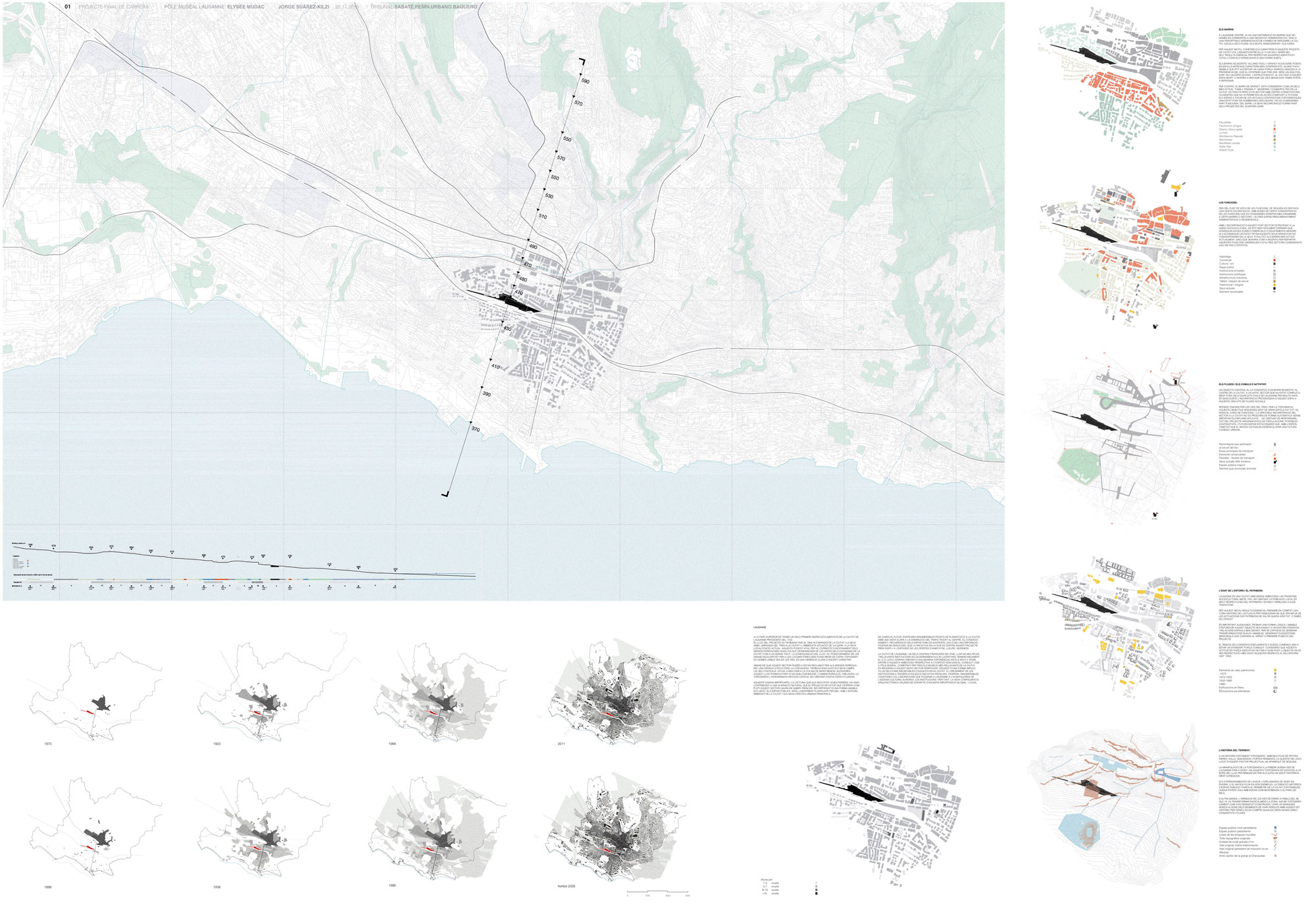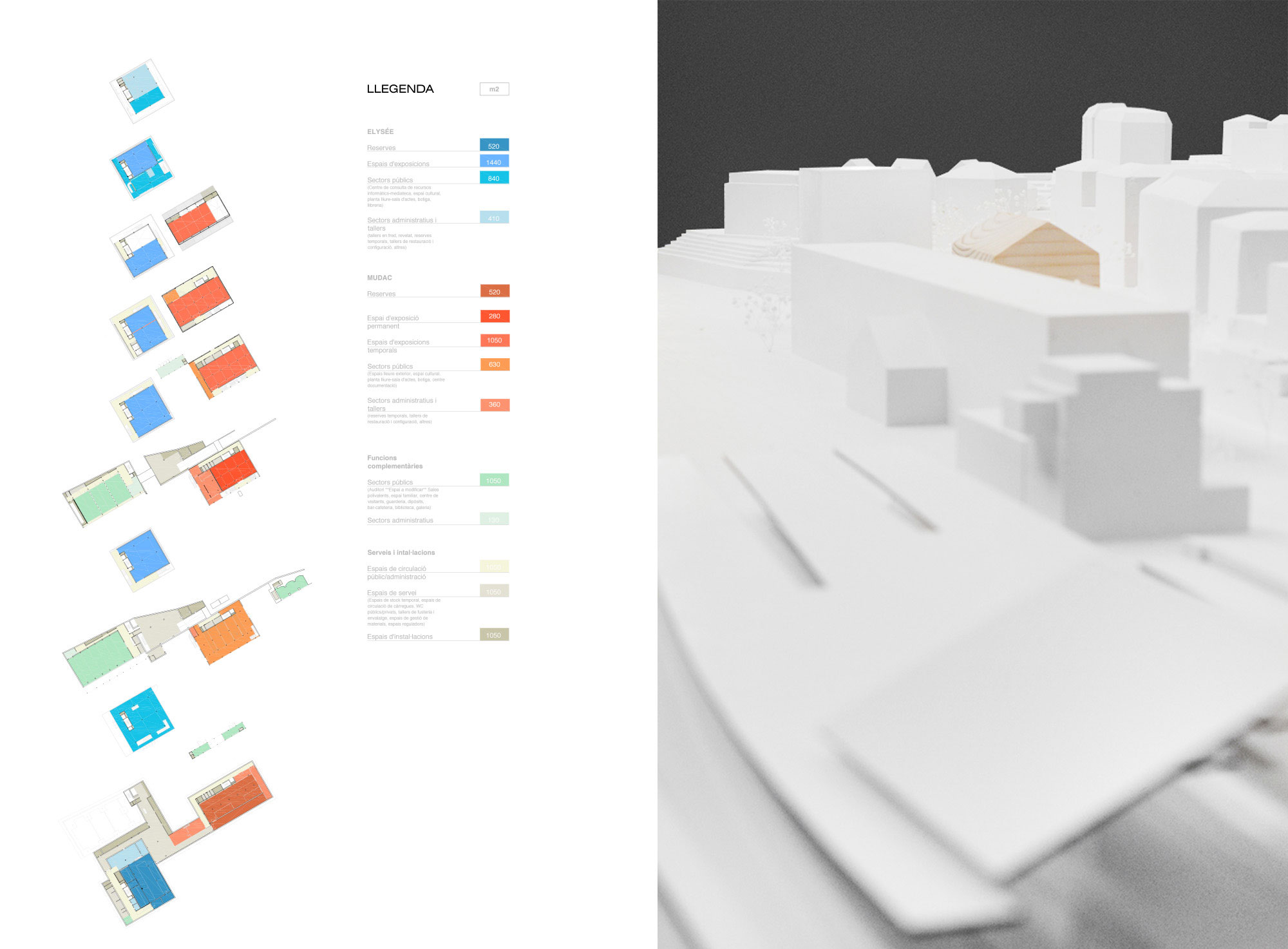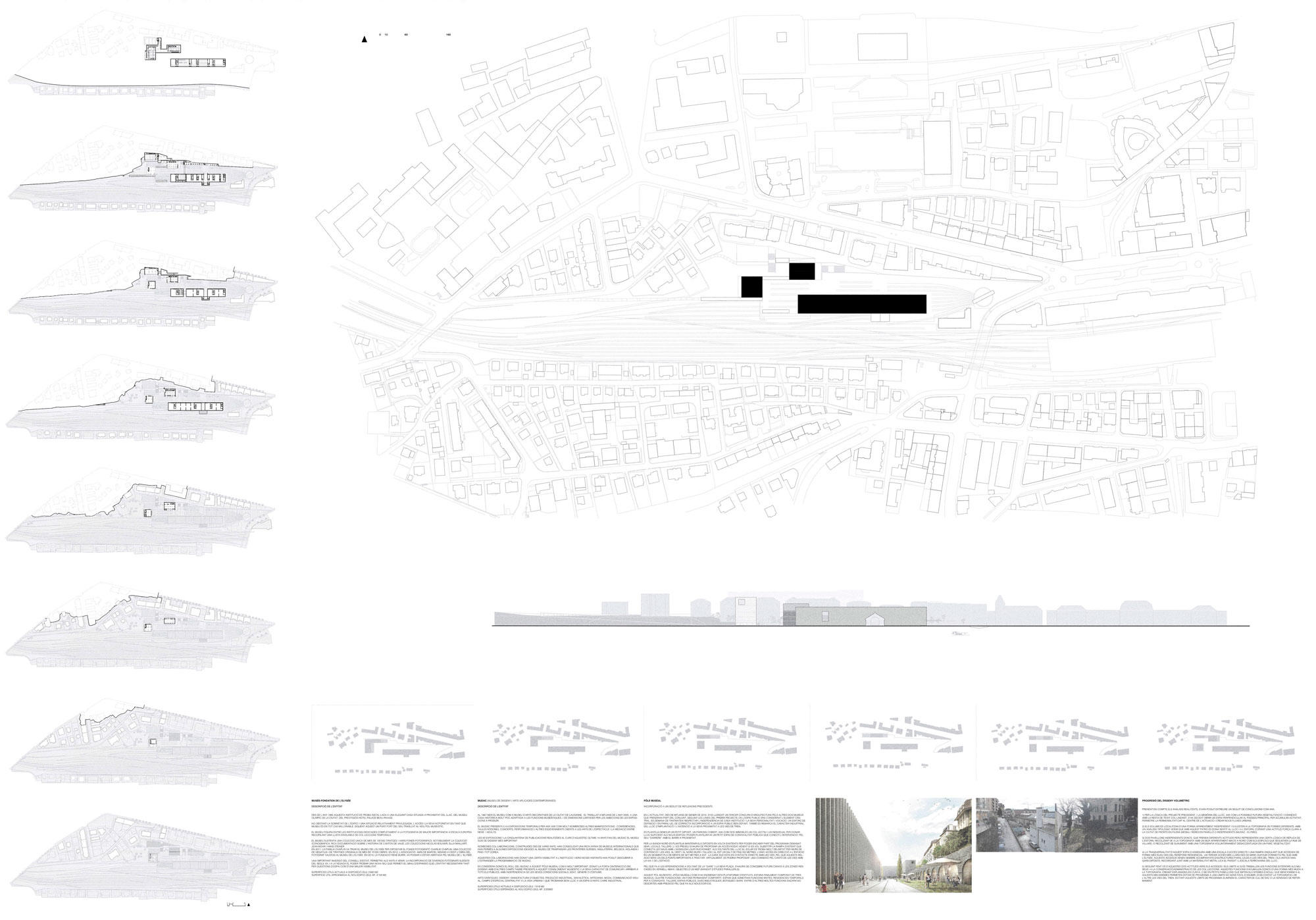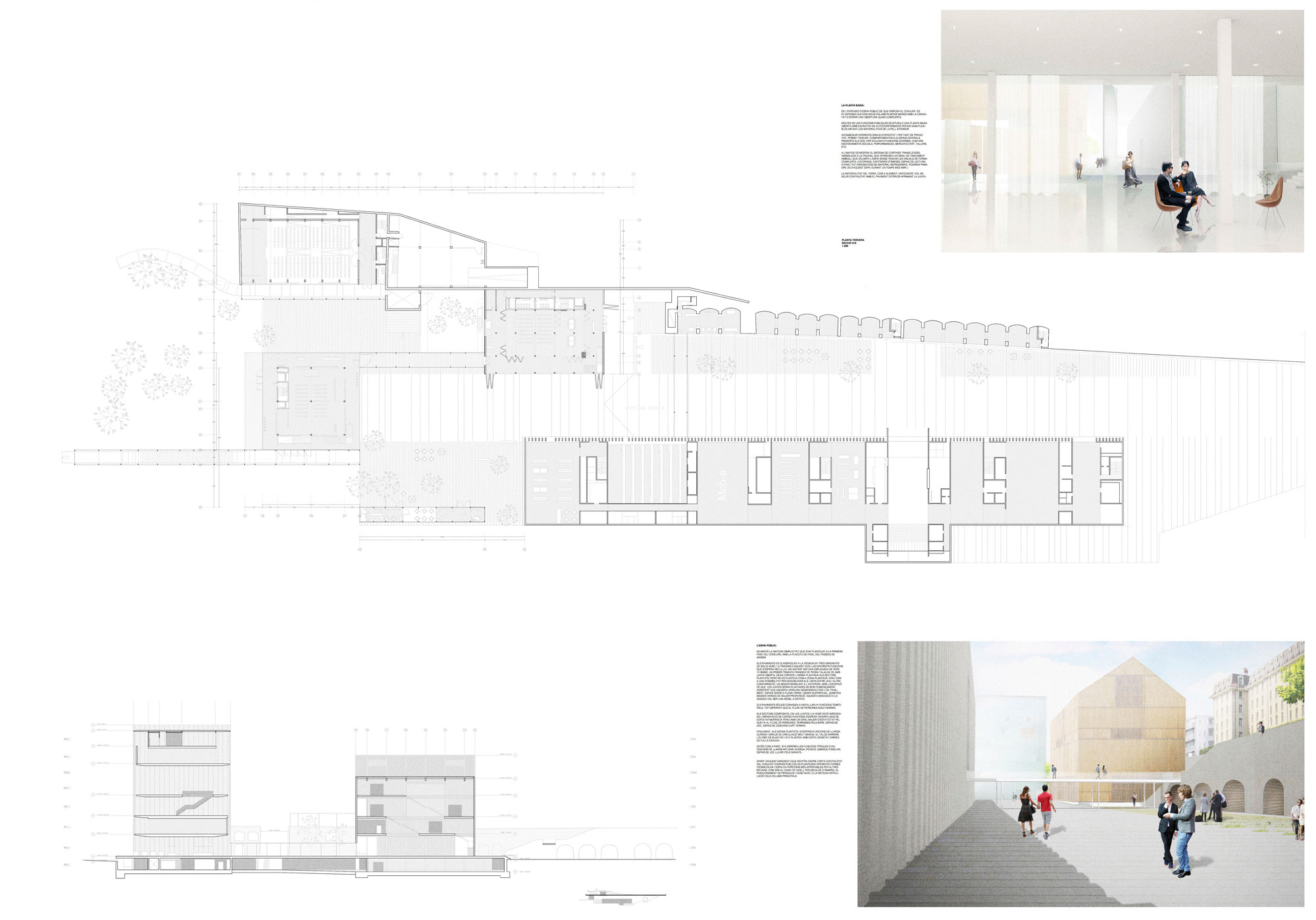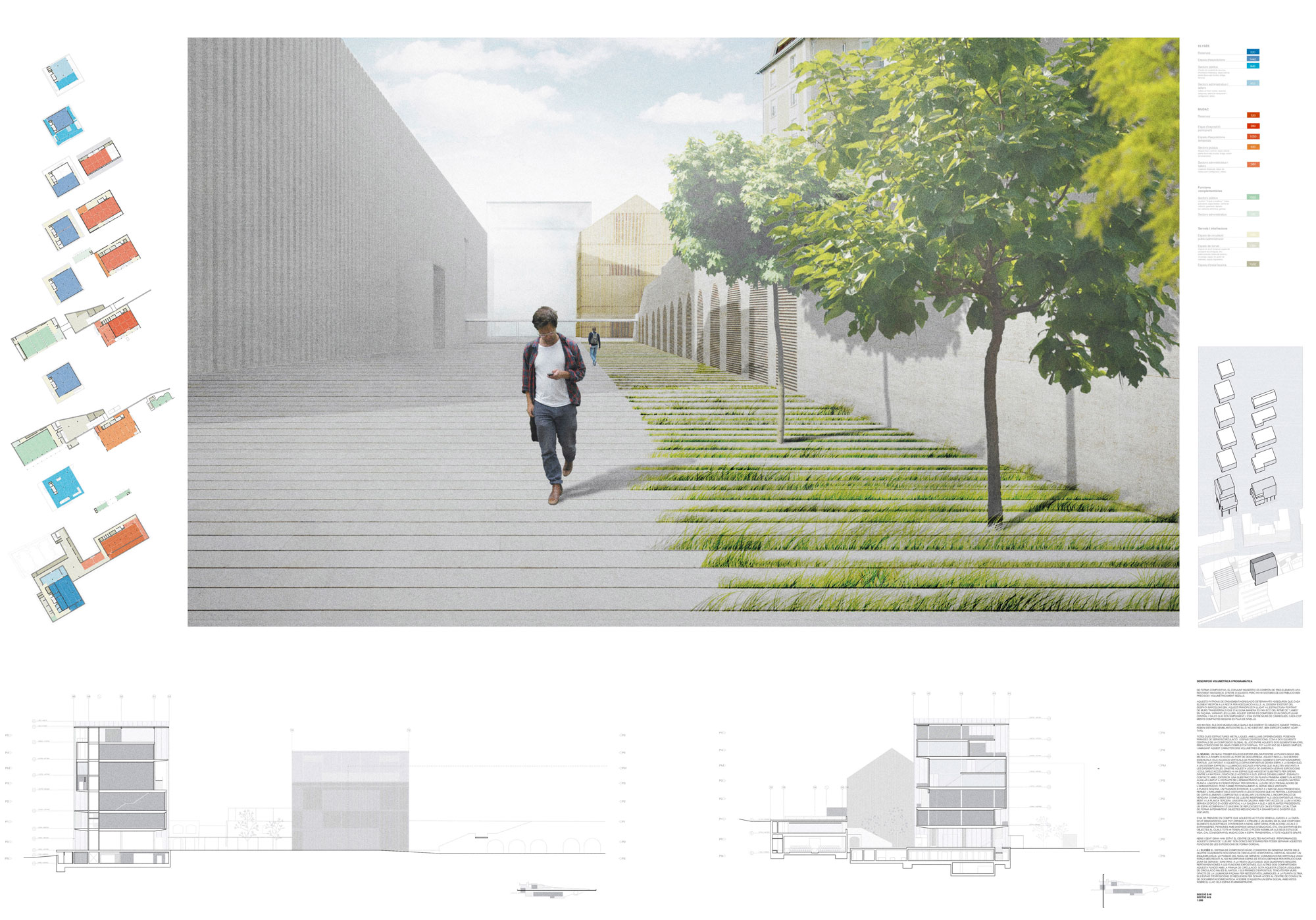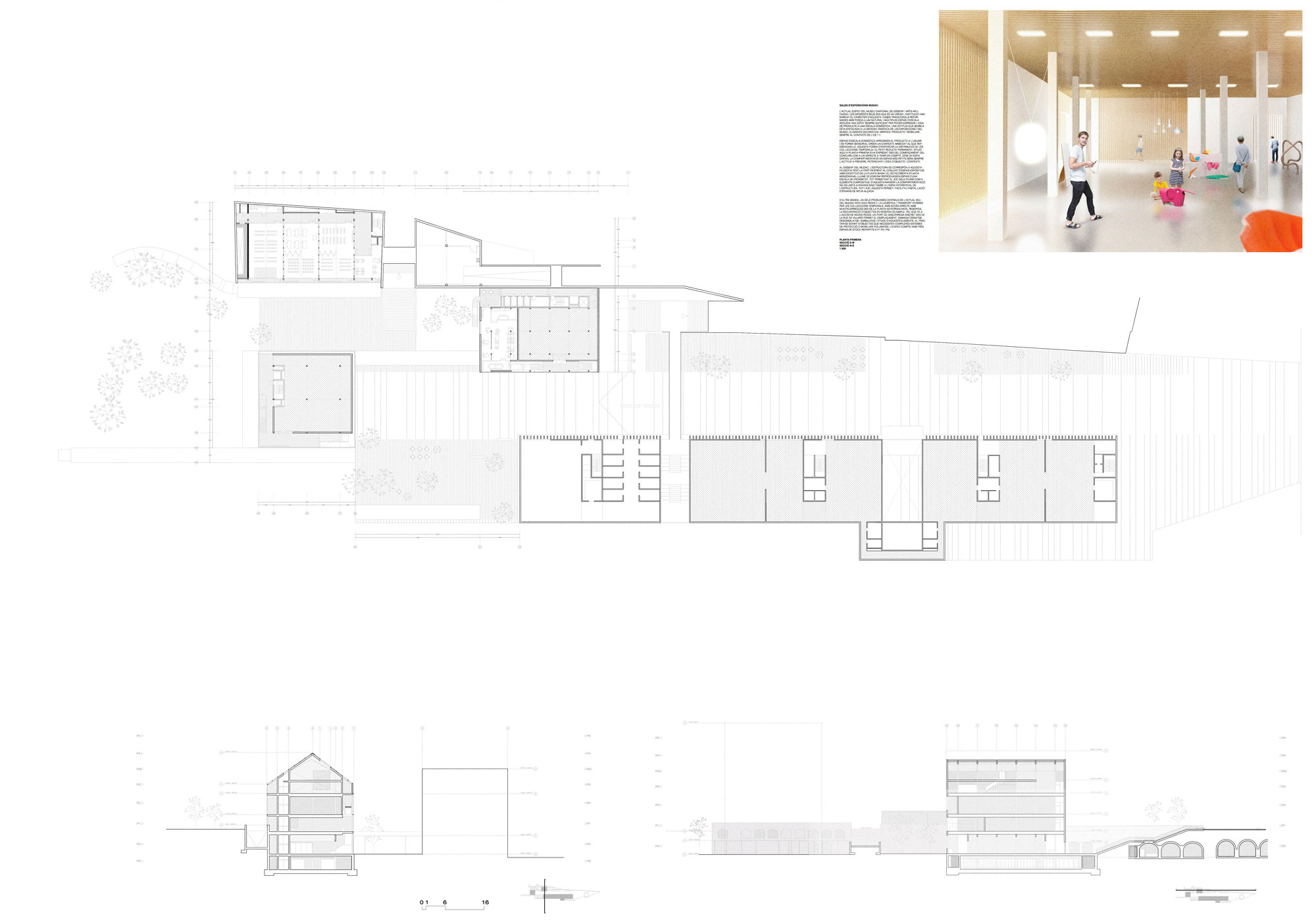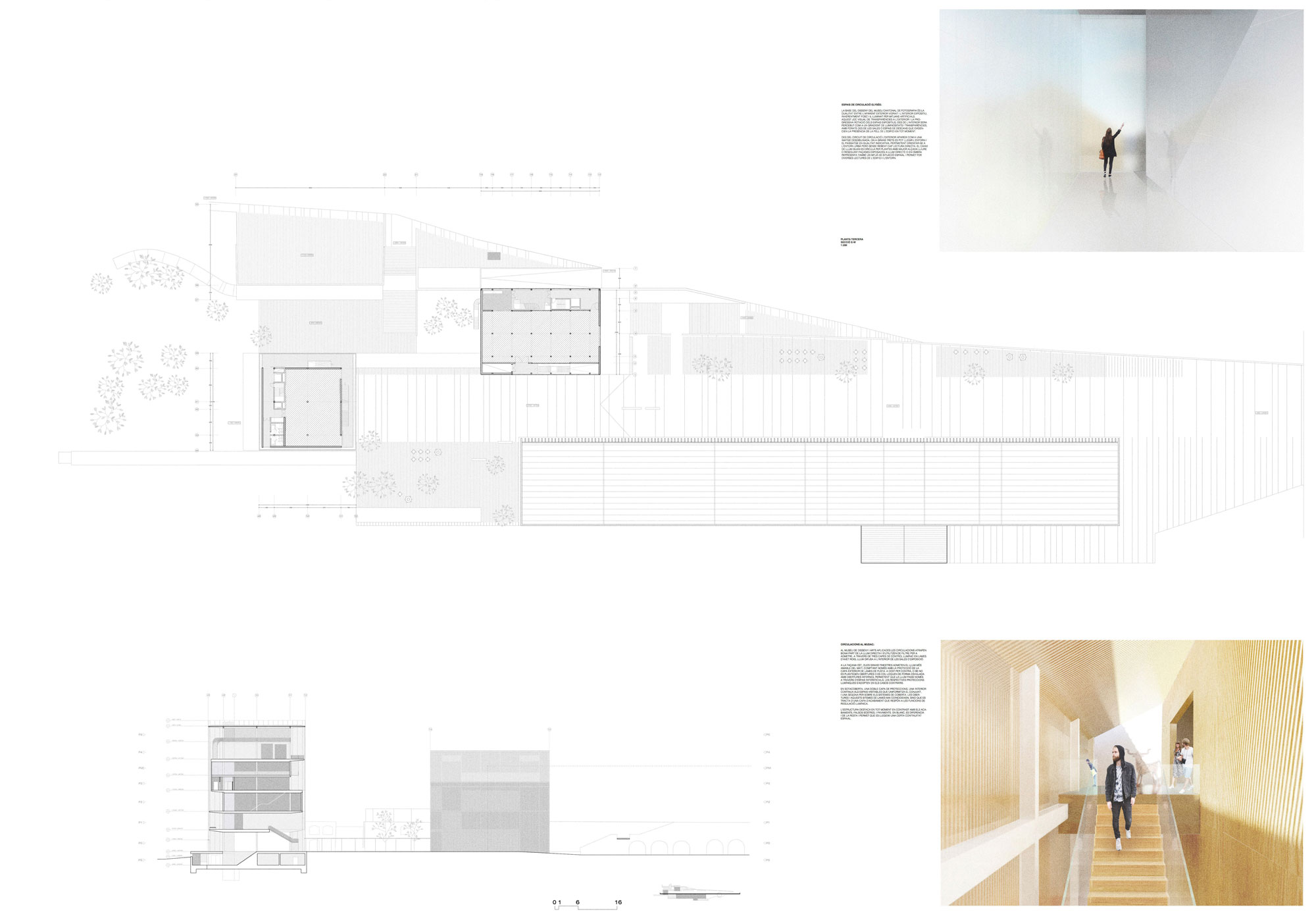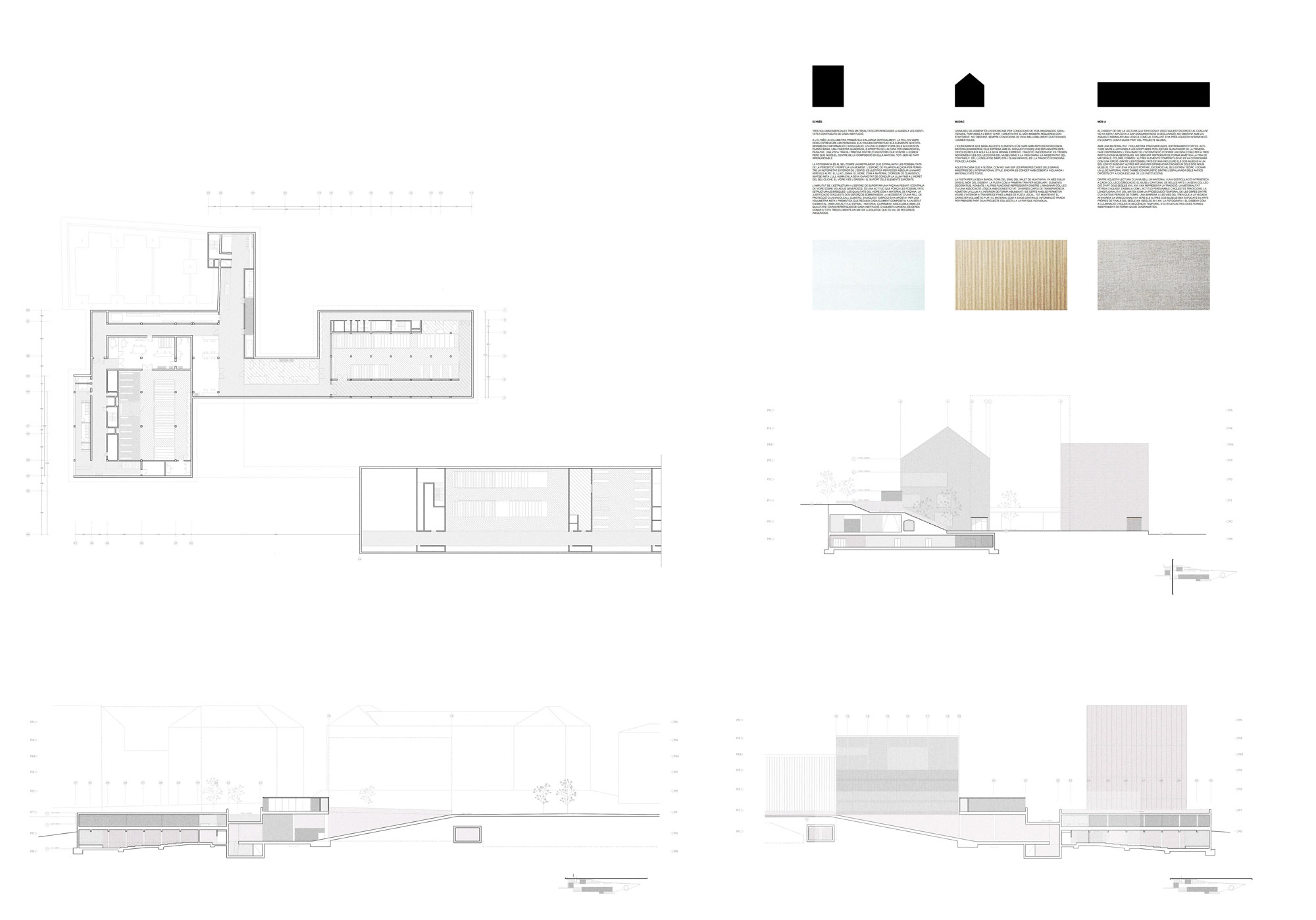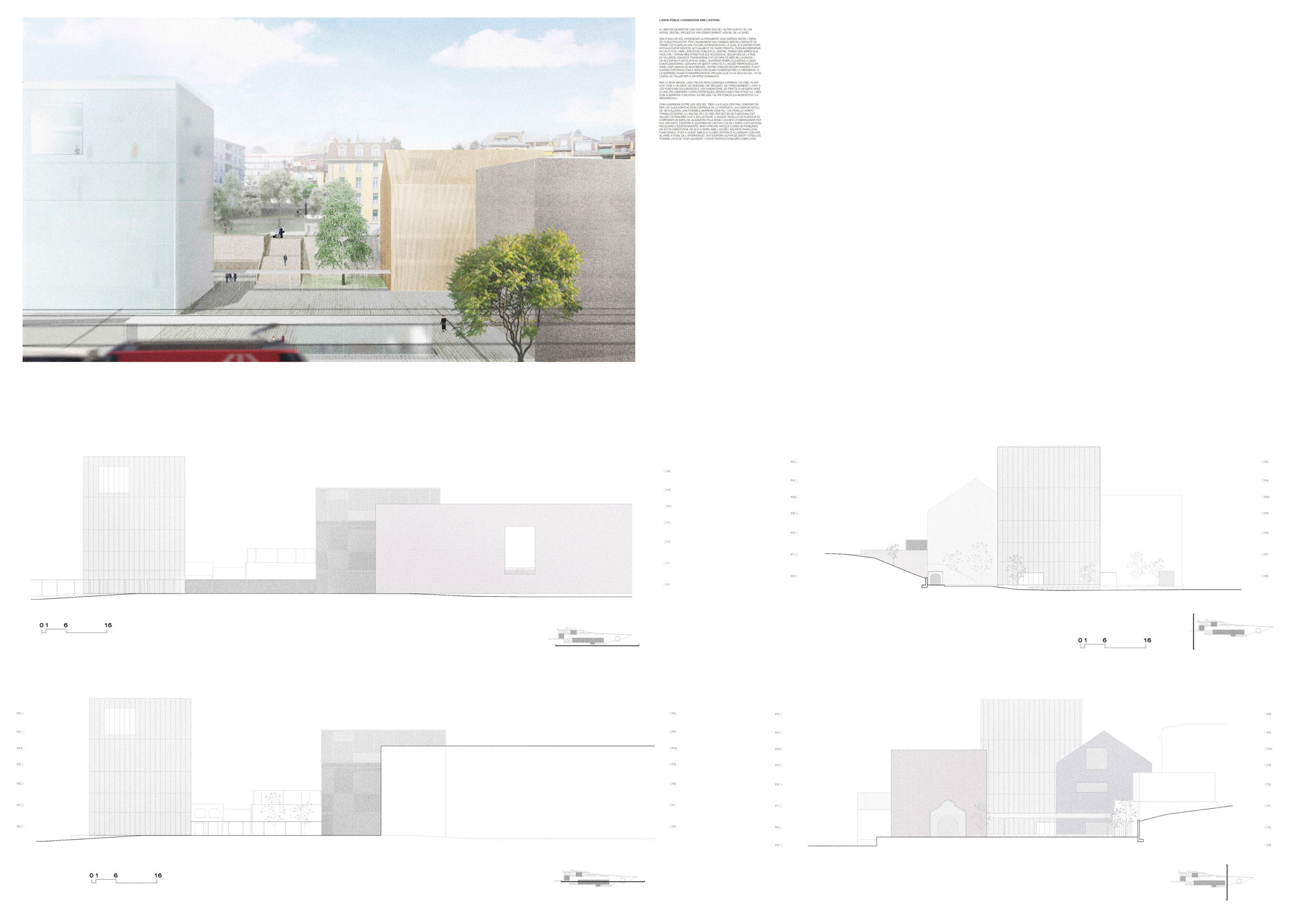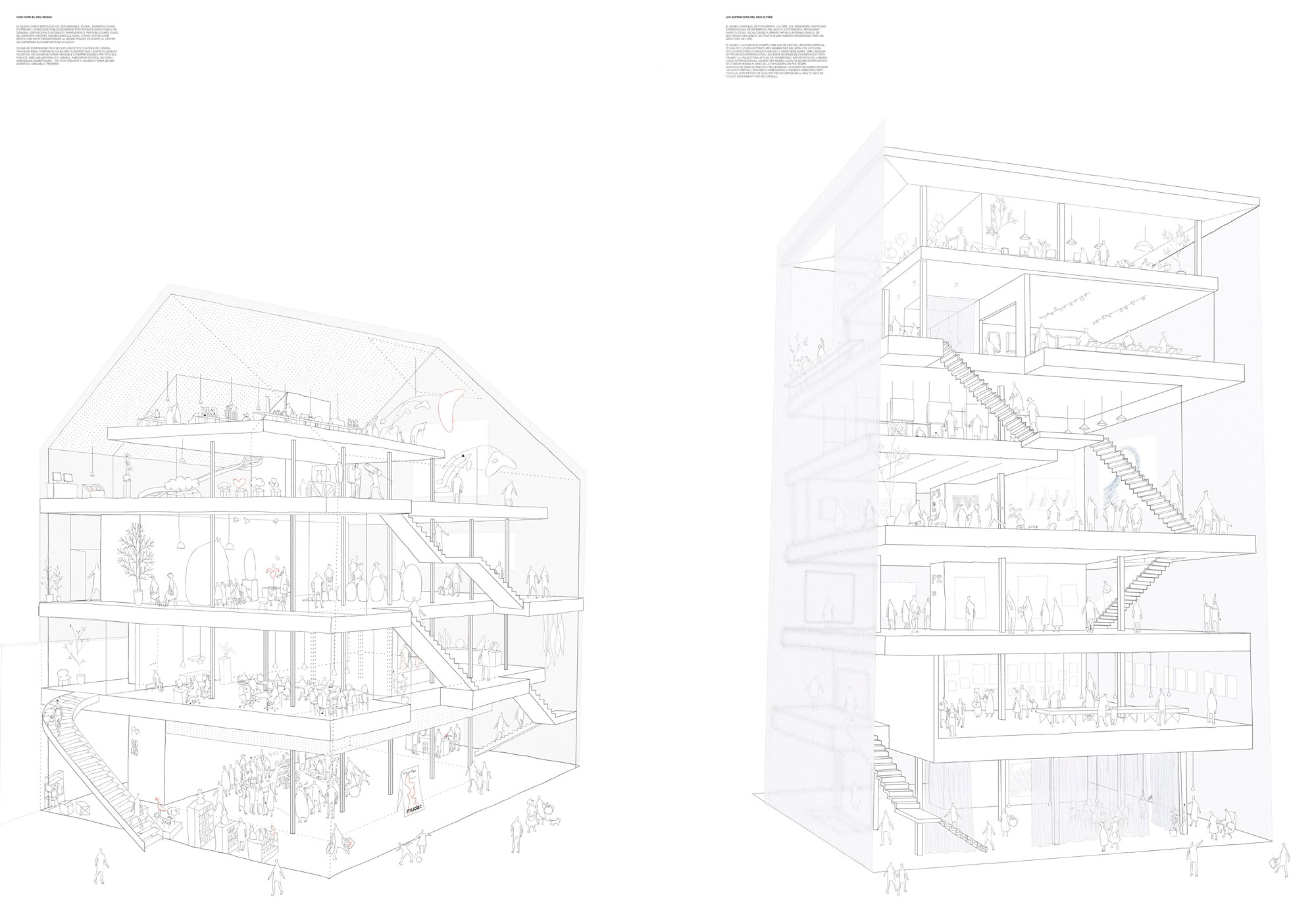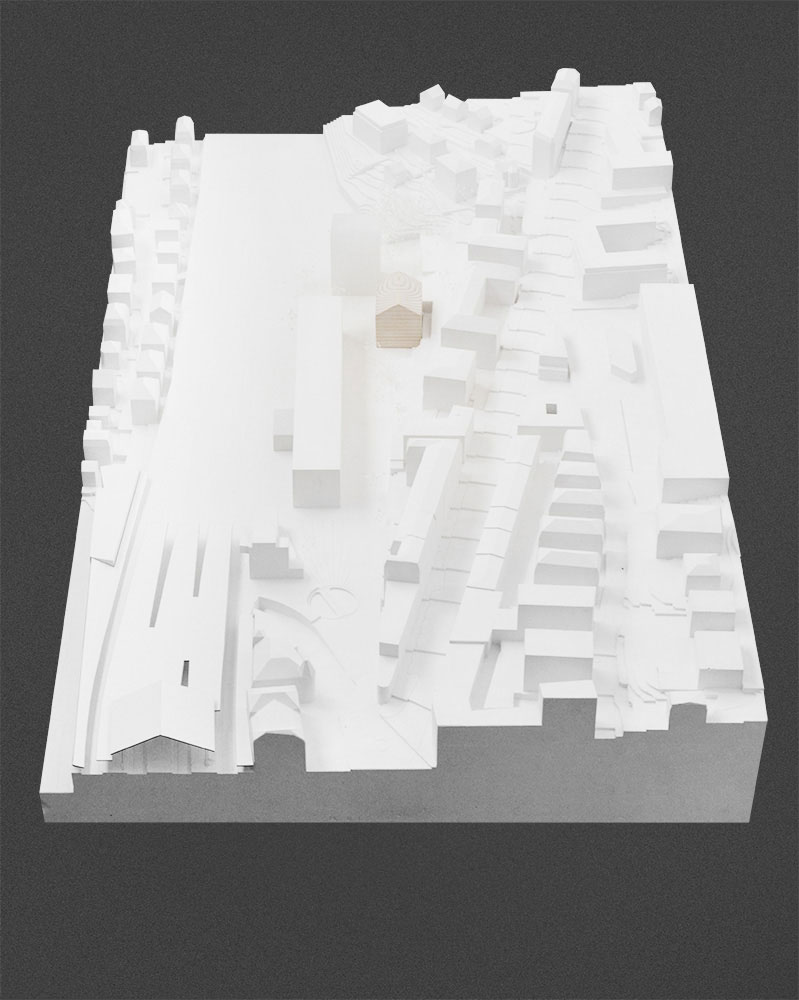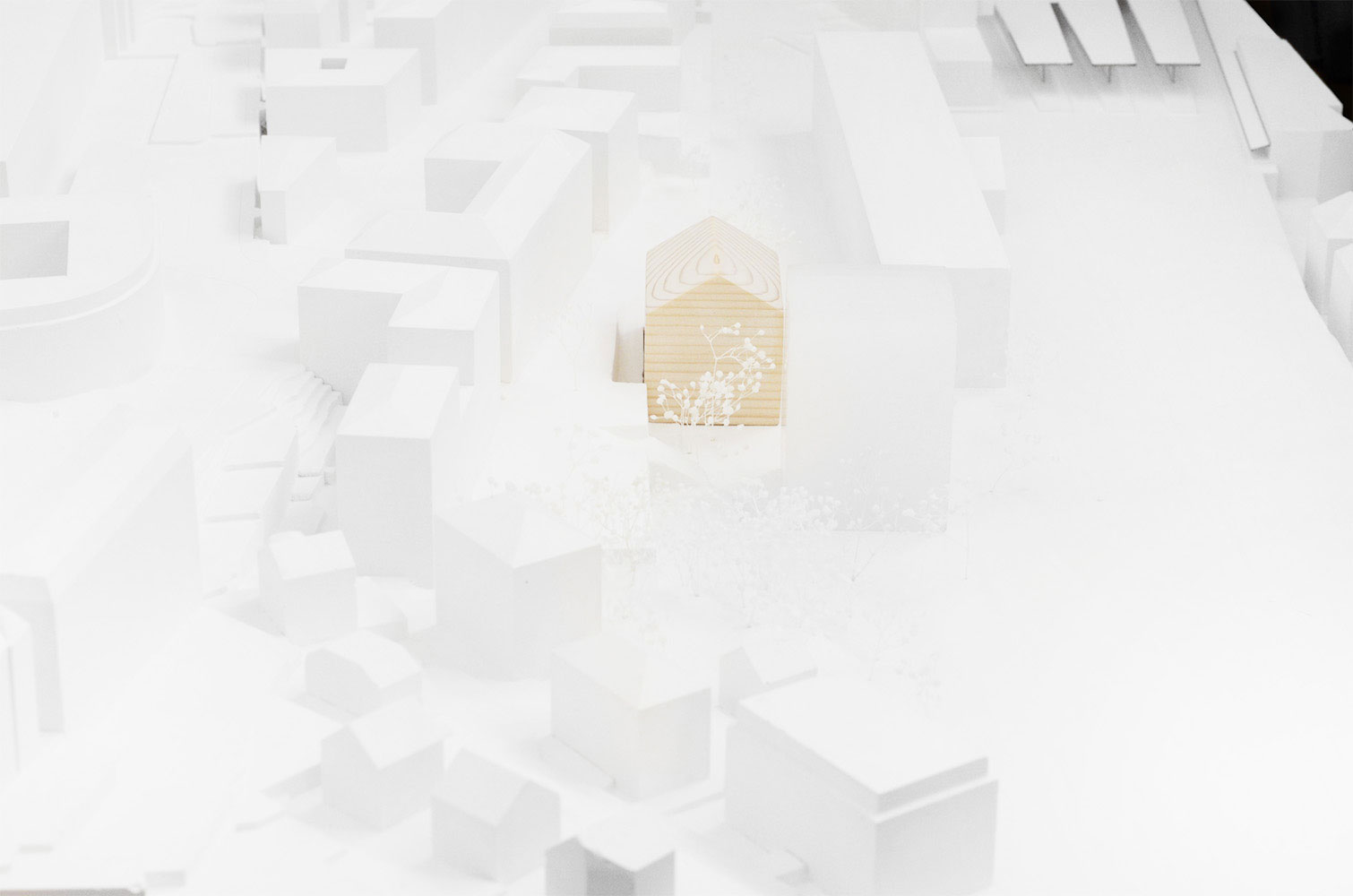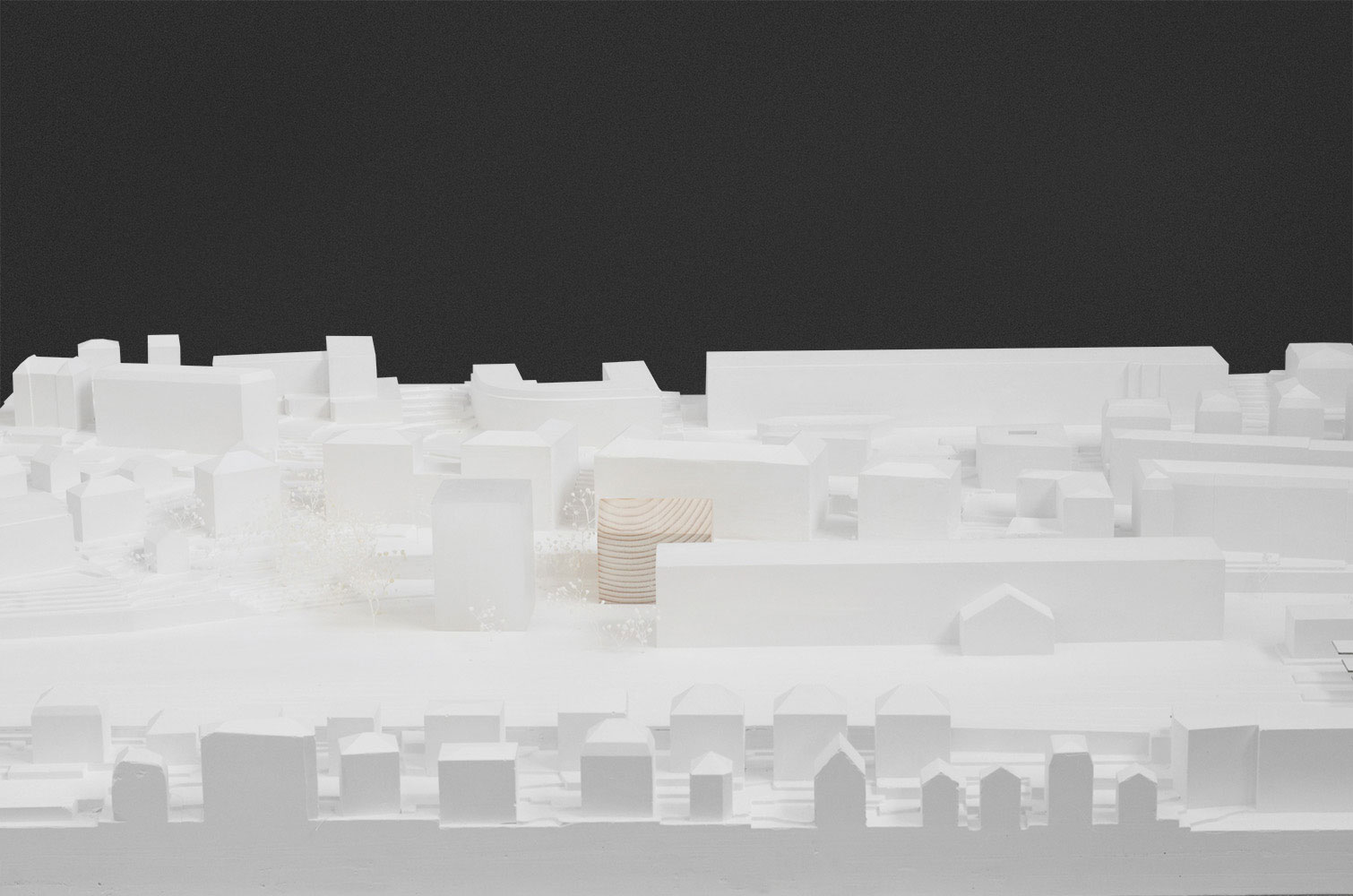1413-JSK-QLS.CH-2015
Clients: ETSA Barcelona, Canton of Vaud
Status: Academic
Location: Lausanne, Switzerland
Coordinates: 46.518910, 6.623712
Climate: Continental, Temperate
Materials: Glass, Wood
Environments: Railway, Urban
Visualizer: Studio
Scale: 25.000 ㎡ Large
Types: Cultural, Museum
This project is centered around the Pôle Muséal Competition in Lausanne, Switzerland. After one year half-way between Epfl and Urbaplan this subject and evironment has gained a special meaning knowing first-hand the city’s lifestyle, the neighbourhoods nearby, and the future changes the city will suffer and enjoy of. The final design has been the result of intense and crossed reflections.
From the design handed by the barecelona-based office estudio Barozzi-Veiga, the second part of this overall project (which was solved last mid-october) had the big responsibility of completing what was then a half-conformed meaning. therefore, from an often misread first proposal which had in fact a very harsh volume and materiality, the capability of creating a meaningful and clear message for the whole of the public space and museum-city was conceived from the beginning as a key point.
From a communication and diagramatic perspective, a three neat volumes composition was set. Three museums, three materials and three gestures that relayed to the collections, the spirit and history of each museum (mcb-a, mudac i elysée). Adding parts of a coherent reading of the first part of the design , these new two volumes follow a bar-pavillion principle often seen at lausanne’s city center (as a decomposition towards less dense areas) and take the materialities of wood and glass, and the gestures of icon-like shape and rising up to the views as attitudes towards the site.
As complements, functions other than the main ones (museums, public areas related to them, administration, store and libraries, performances/events spaces) which are absorbed by the two main volumes taking part of the composition, are hidden into a second plan; either in an underground layer (storage and workshops), onto the topography (common functions and multi-purpose rooms) or behind those (the «livraison» entrance). Public-space wise, a gradient from solid pavement to green planted areas decomposes the museum area towards the residential area behind, thought to be a method to clarify the strategy and make the decomposition of the intervention even clearer.
It is thought that this proposal, accompanied with clear and useful floor-diagrams, make the whole of the intervention come closer to the public and gives a certain coherence to the overall space.
